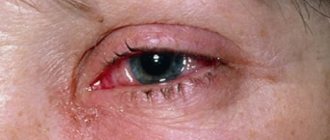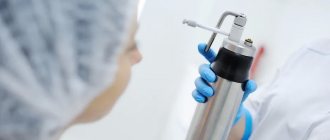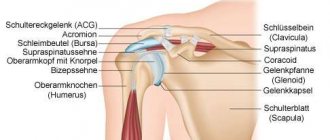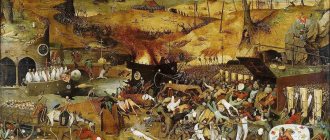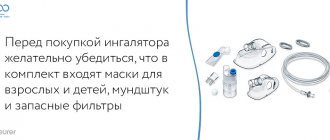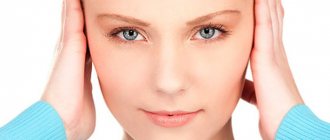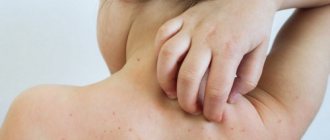Tendinitis of the calcaneal tendon in ICD 10 has the code M76.6 This is a disease in which the inflammatory-degenerative process is localized to the Achilles tendon. Athletes are mainly susceptible to the disease, since long-term sports are accompanied by excessive stress on the Achilles tendon, which results in injuries. The disease is often diagnosed in older people. Patients who are treated for Achilles tendonitis at Yusupov Hospital have the following benefits;
- European level of comfort;
- Diagnostics using the latest devices from leading global manufacturers;
- Treatment with effective medications that are registered in the Russian Federation and have minimal side effects;
- Restoring the function of the lower limb using innovative rehabilitation techniques;
- Individual approach to the treatment of each patient.
Depending on the course of the disease and clinical picture, there are 3 main types of heel tendonitis:
- Peritendinitis is a type of disease that is characterized by inflammation and degenerative process of the soft tissues surrounding the joint;
- Tendinitis is an inflammatory lesion of the Achilles tendon itself, without involving adjacent tissues in the pathological process;
- Enthesopathy is a degenerative process in the Achilles tendon at the junction with the bone (sometimes accompanied by the development of a heel spur).
Severe cases of calcaneal tendonitis are discussed by professors, associate professors, and doctors of the highest category at a meeting of the Expert Council. Leading specialists in the field of rheumatology and orthopedics collectively decide on the need to perform surgical intervention in patients for whom all innovative methods of conservative therapy have proven ineffective. The operations are performed by traumatologists who are fluent in the techniques of modern surgical interventions on the Achilles tendon.
Tendinopathy - definition
Tendinopathy (Latin: tendonitis) is a disease affecting the tendon structures leading to tendinitis. A tendon is an anatomical structure that attaches a muscle to a bone and is an integral part of it.
Tendinopathy is a whole group of diseases associated with tendon pathology in various places. There are two phases: acute (reactive) and chronic (degenerative). In the first, symptoms appear suddenly and are acute, and ignoring them and stopping treatment leads to the development of a chronic phase. There is a loss of elasticity of collagen fibers and local thickening in the tendon structure. Further neglect results in tendon rupture. This usually requires surgery and long-term immobilization, which, unfortunately, does not guarantee complete restoration of physical fitness.
Depending on the stage of the disease, we choose one or more treatment methods in Moscow:
Therapeutic massage, osteopathy, manual therapy in Moscow
Helps bones and joints take the correct physiological position, relieves pain and spasms, relaxes muscles.
Acupuncture in Moscow
Work on biologically active points. It affects the affected area and the body as a whole. Eliminates the cause of the disease and removes the symptoms.
In addition, according to indications, the following are used: taping, pharmacopuncture, FormTotix insoles, exercise therapy with an instructor and other methods. The choice of procedures depends on the current condition; taken together, they act faster and give a more lasting result.
Tendinopathy - causes
Factors that contribute to the development of tendon diseases include:
- improper preparation for training,
- foot defects,
- wrong shoes,
- insufficient preparation of the body for physical activity,
- increasing loads too quickly during training,
- returning too quickly to physical activity after an earlier and longer break,
- excessive mechanical stress,
- muscle imbalance.
There are usually several reasons and they are combined in different collections.
Clinical picture
The main manifestations of tendinopathy are pain and decreased functional activity. The pain is usually associated with exertion. At an early stage, pain appears only at the beginning of physical activity and disappears during its process. Usually the patient is able to localize the painful area quite clearly. In the early stages, the pain is described as “severe” or “sharp,” and sometimes as “dull,” especially if the pain persists for several weeks.
Examples of tendinopathy include the following conditions: rotator cuff tendinopathy, lateral and medial epicondylitis, patellar ligament and Achilles tendinopathy.
Tendinopathy - symptoms
Symptoms of tendon tendinopathy are signs of inflammation:
- warming
- edema,
- get sick
- local redness of the body.
With tendon diseases, all actions that require the work of damaged structures (mainly stretching them) will be painful. This includes walking up and down stairs, squats, or walking on your toes. Symptoms at rest are characteristic of the acute phase. In the chronic phase, symptoms persist even after cessation of activity.
Physical examination
The examination includes examination for muscle atrophy, asymmetry, edema and erythema. Atrophy is often present in chronic conditions and is an important clue to the duration of tendinopathy. Also, when examining pathological tendons, swelling, erythema and asymmetry may be observed. Range of motion testing is often limited on the symptomatic side.
The physical examination should include tests that load the tendon to simulate pain and other stress tests that assess the condition of adjacent structures.
Tendinopathy - locations
In the literature, among the most common localizations of tendon diseases, you can find information about shoulder tendinopathy, or more precisely, rotator cuff tendinopathy. We are talking about the four muscles that make up this cone: supraspinatus, subcapular, less round and subscapularis. Tendinopathy results in a significant reduction in range of motion and soreness in the deltoid muscle.
In case of tendon degeneration – tendinosis – pain, degenerative changes in the tendons and chin conflict occur. Tendon diseases that occur within the upper extremity also include long head of biceps tendinopathy, lateral elbow tendinopathy (called tennis elbow), and fixator finger associated with emerging tendon sheath pathology.
About
Features of the development of tendinitis in children
This disease does not occur as often in children as in adults. The most “popular” place where tendinosis occurs is the knee joint. At the first symptoms of tendonitis in a child, you need to contact a pediatric traumatologist. He will conduct an examination and make an accurate diagnosis. After this, the little patient will be prescribed the necessary medications. Most often, the list includes muscle relaxants and non-steroidal anti-inflammatory drugs, both for oral administration and in the form of ointments.
For a certain period of time, you will have to limit your mobility and remove all physical activity. If the pain is very severe, the joint is immobilized. Treatment includes a variety of physical therapy, including electrophoresis. As soon as the acute phase of the disease has passed, a course of massages is carried out and physical therapy is added.
Tendinopathy - diagnosis
In case of tendon diseases, ultrasound diagnostics is the basis of visual diagnostics. Allows you to visualize soft tissue structures and determine the degree of their damage, showing areas of reduced echogenicity with abnormal tendon structure in which an inflammatory process can develop.
In some cases, MRI is also used. This allows you to see possible swelling around the tendons and their possible destruction. X-ray examination is practically useless, since it is impossible to visualize non-osseous structures.
Recommendations
- ^ a b
"Tendinopathy MeSH Browser".
US National Library of Medicine
. Retrieved November 18, 2021. - ^ a b c d f g gram h i j k
Wilson, JJ;
Best TM (September 2005). "Common Overuse Tendon Problems: Review and Treatment Recommendations" (PDF). American family physician
.
72
(5):811–8. PMID 16156339. - ^ a b c d f g gram hour
“Tendinitis”.
National Institute of Arthritis and Musculoskeletal and Skin Diseases
. April 12, 2021. Retrieved November 18, 2021. - ^ a b
"Tendinitis".
National Institute of Arthritis and Musculoskeletal and Skin Diseases
. April 12, 2021. Retrieved November 18, 2021. - ^ a b c
"Tendinitis".
National Institute of Arthritis and Musculoskeletal and Skin Diseases
. April 12, 2021. Retrieved November 18, 2021. - "Tendinitis." National Institute of Arthritis and Musculoskeletal and Skin Diseases
. April 12, 2021. Retrieved November 18, 2021. - "Tendinitis." National Institute of Arthritis and Musculoskeletal and Skin Diseases
. April 12, 2021. Retrieved November 18, 2021. - ^ a b c
"Tendinitis".
National Institute of Arthritis and Musculoskeletal and Skin Diseases
. April 12, 2021. Retrieved November 18, 2021. - ^ a b
"Tendinitis".
National Institute of Arthritis and Musculoskeletal and Skin Diseases
. April 12, 2021. Retrieved November 18, 2021. - Khan, K.M.; Cook JL; Kannus P; Maffulli N; Bonar S.F. (03/16/2002). "It's time to abandon the 'tendinitis' myth: painful conditions with excessive tendon stress have a non-inflammatory pathology." BMJ
.
324
(7338):626–7. doi:10.1136/bmj.324.7338.626. PMC 1122566. PMID 11895810. - Rees JD, Maffulli N, Cook J (September 2009). "Management of tendinopathy." Am J Sports Med
.
37
(9):1855–67. Doi:10.1177/0363546508324283. PMID 19188560. S2CID 1810473.CS1 maint: multiple names: list of authors (link) - Nirschl R.P., Ashman E.S. (2004). "Tendinosis in Tennis Elbow (Epicondylitis)." Lecture course Instr
.
53
:587–98. PMID 15116648. - FDA May 12, 2021 FDA Drug Safety Communication: FDA Recommends Limiting the Use of Fluoroquinolone Antibiotics for Certain Uncomplicated Infections; warns about disabling side effects that may occur
- Stevenson, A.L.; Wu, W; Cortes, D; Rochon, Pennsylvania (September 2013). "Tendon injury and fluoroquinolone use: a systematic review." Drug safety
.
36
(9): 709–21. doi:10.1007/s40264-013-0089-8. PMID 23888427. S2CID 24948660. - Bolon, Brad (01/01/2017). "Mini Review: Toxic Tendinopathy." Toxicological pathology
.
45
(7):834–837. Doi:10.1177/0192623317711614. ISSN 1533-1601. PMID 28553748. - Millar, Netherlands; Murrell, Georgia; McInnes, I.B. (January 25, 2021). "Inflammatory mechanisms in tendinopathy - towards translation." Nature Reviews.
Rheumatology .
13
(2): 110–122. Doi:10.1038/nrrheum.2016.213. PMID 28119539. S2CID 10794196. - Cook, J.L.; Rio, E; Purdam, C.R.; Docking, S.I. (October 2021). "Revisiting the continuum model of tendon pathology: what are its benefits in clinical practice and research?". British Journal of Sports Medicine
.
50
(19): 1187–91. Doi:10.1136/bjsports-2015-095422. PMC 5118437. PMID 27127294. - Millar, Neil L.; Murrell, George A. S.; McInnes, Ian B. (2017-01-25). "Inflammatory mechanisms in tendinopathy - towards translation." Nature Reviews.
Rheumatology .
13
(2): 110–122. Doi:10.1038/nrrheum.2016.213. ISSN 1759-4804. PMID 28119539. S2CID 10794196. - Sun, Y.L.; and others. (2015). "Lubricin in the human Achilles tendon: evidence of unexplained slip and shear forces in the Achilles tendon." J Orthop Res
.
33
(6):932–7. Doi:10.1002/jor.22897. PMID 25864860. - Gayda, J. E., Ash, M. S., Bass, S. L., Cook, J. L. (2009). “Is obesity an underappreciated risk factor for tendinopathy? Systematic review". Rheumatoid arthritis
.
61
(6):840–9. Doi:10.1002 / art.24518. PMID 19479698. - Charnoff, Jesse; Naqvi, Usker (2017). "Tendinosis (tendinitis)." StatPearls
. Treasure Island (Florida): StatPearls Publishing. PMID 28846334. - Fu SK, Rolf S, Cheuk YS, Lui PP, Chan KM. (2010). "Deciphering the pathogenesis of tendinopathy: a three-step process." Sports Med Arthrosc Rehabil Ther Technol
.
2
: 30. doi:10.1186/1758-2555-2-30. PMC 3006368. PMID 21144004. - Abate M, Silbernagel KG, Siljeholm C, Di Iorio A, De Amicis D, Salini V, Werner S, Paganelli R (2009). "Pathogenesis of tendinopathies: inflammation or degeneration?". Arthritis Research and Treatment
.
11
(3): 235. doi:10.1186/ar2723. PMC 2714139. PMID 19591655. - du Toit, C; Stiller, M; Saunders, R; Bisset, L; Vicenzino, B. (2008). "Diagnostic accuracy of Doppler ultrasound in patients with chronic tennis elbow." British Journal of Sports Medicine
.
42
(11):572–576. doi:10.1136/bjsm.2007.043901. HDL:10072/22142. ISSN 0306-3674. PMID 18308874. S2CID 3274396. - Nirschl RP (October 1992). "Elbow Tendinosis/Tennis Elbow." Clin Sports Med
.
11
(4): 851–70. Doi:10.1016/S0278-5919(20)30489-0. PMID 1423702. - Maffulli N, Ewen SW, Waterston SW, Reaper J, Barrass V (2000). “Tenocytes from ruptured and tendinopathic Achilles tendons produce greater amounts of type III collagen than tenocytes from normal Achilles tendons. An in vitro model of human tendon healing.” Am J Sports Med
.
28
(4):499–505. Doi:10.1177/03635465000280040901. PMID 10921640. S2CID 13511471. - Ho Jo, Savadkar P, Mudera V (2014). "A review of the use of cell therapy in the treatment of tendon diseases and injuries." J Tissue Eng
.
5
: 2041731414549678. doi:10.1177/2041731414549678. PMC 4221986. PMID 25383170. - McShane JM, Nazarian LN, Harwood MI (October 2006). "Percutaneous needle tenotomy under sonographic guidance for the treatment of common elbow extensor tendinosis." J Ultrasound Med
.
25
(10): 1281–9. Doi:10.7863/jum.2006.25.10.1281. PMID 16998100. - Zeissig, Eva; Ochberg, Lars; Alfredson, Håkan (2006). “Polidocanol sclerosing injections for chronic tennis elbow pain—promising results in pilot study.” Knee surgery, Sports traumatology, Arthroscopy
.
14
(11): 1218–1224. doi:10.1007/s00167-006-0156-0. ISSN 0942-2056. PMID 16960741. S2CID 23469092. - Pingel J, Lu Y, Starborg T, Fredberg U, Langberg H, Nedergaard A, et al. (2014). "Three-dimensional ultrastructure and collagen composition of healthy and overloaded human tendon: evidence of tenocyte and matrix deformation." J Anat
.
224
(5):548–55. Doi:10.1111/joa.12164. PMC 3981497. PMID 24571576. - Duenwald S, Kobayashi H, Frisch K, Lakes R, Vanderby R (February 2011). “Ultrasonic echo is associated with stress and tendon strain.” J Biomech
.
44
(3):424–9. doi:10.1016/j.jbiomech.2010.09.033. PMC 3022962. PMID 21030024. - Duenwald-Kuehl S, Lakes R, Vanderby R (June 2012). “Strain-induced damage reduces changes in tendon echo intensity during loading.” J Biomech
.
45
(9):1607–11. doi:10.1016/j.jbiomech.2012.04.004. PMC 3358489. PMID 22542220. - Tumilty S., Mann J., McDonough S., Hurley D. A., Basford J. R., Baxter G. D. (February 2010). "Low-level laser treatment of tendinopathy: a systematic review with meta-analysis." Photomedicine and laser surgery
.
28
(1): 3–16. Doi:10.1089 / photo.2008.2470. PMID 19708800. S2CID 10634480. - Loew, Laurianne M; Brosseau, Lucy; Tugwell, Peter; Wells, George A; Welch, Vivian; Shea, Beverly; Poitras, Stefan; De Angelis, Gino; Rahman, Prinon (November 8, 2014). "Deep transverse friction massage for the treatment of tendinitis of the lateral elbow or lateral knee." Cochrane Database of Systematic Reviews
(11): CD003528. Doi:10.1002/14651858.cd003528.pub2. ISSN 1465-1858. PMC 7154576. PMID 25380079. - Gaujoux-Viala C, Dougados M, Gossec L (December 2009). "Efficacy and safety of steroid injections for shoulder and elbow tendinitis: a meta-analysis of randomized controlled trials." Anna.
Reum. Dis .
68
(12):1843–9. Doi:10.1136/ard.2008.099572. PMC 2770107. PMID 19054817. - Mohamadi, A; Chan, J. J.; Claessen, F. M.; Ring, D; Chen, North Carolina (January 2021). "Corticosteroid injections provide modest and temporary pain relief in rotator cuff tendinosis: a meta-analysis." Clinical Orthopedics and Related Research
.
475
(1):232–243. Doi:10.1007/s11999-016-5002-1. PMC 5174041. PMID 27469590. - Dean, B.J.; Lostis, E; Oakley, T; Rombach, I; Morrie, Maine; Carr, A. J. (February 2014). "Risks and benefits of treating tendinopathy with glucocorticoids: a systematic review of the effects of topical glucocorticoid on the tendon." Seminars on arthritis and rheumatism
.
43
(4):570–6. doi:10.1016/j.semarthrit.2013.08.006. PMID 24074644. - Kearney, R.S.; Parsons, N; Metcalfe, D.; Costa, M. L. (26 May 2015). “Injection Therapy for Achilles Tendinopathy” (PDF). Cochrane Database of Systematic Reviews
(5): CD010960. Doi:10.1002/14651858.CD010960.pub2. PMID 26009861. - Moraes, Vinicius Y; Lenza, Mario; Tamaoki, Marcel June; Faloppa, Flavio; Belloti, Joao Carlos (29 April 2014). "Cochrane Database of Systematic Reviews." Cochrane Database Syst Rev
(4): CD010071. Doi:10.1002/14651858.cd010071.pub3. PMC 6464921. PMID 24782334. - McCormick A, Charlton J, Fleming D (June 1995). “Assessing medical needs in the primary health care system. General practice morbidity research is another source of information.” BMJ
.
310
(6993): 1534. doi:10.1136/bmj.310.6993.1534d. PMC 2549904. PMID 7787617.CS1 maint: several names: list of authors (contact) - de Jonge S; and others. (2011). "Incidence of the average proportion of Achilles tendinopathy in the general population." Br J Sports Med
.
45
(13): 1026–8. Doi:10.1136/bjsports-2011-090342. HDL:1765/30870. PMID 21926076. S2CID 206879020. - Leppilahti J, Puranen J, Orava S. Incidence of Achilles tendon rupture. Acta Orthop Scand. 1996; 67: 277-9.
- Littlewood, Chris; May, Stephen; Walters, Stephen (10/01/2013). "Epidemiology of rotator cuff tendinopathy: a systematic review." Shoulder and elbow
.
5
(4): 256–265. Doi:10.1111/sae.12028. ISSN 1758-5740. S2CID 74208378. - "Inflammation". Free dictionary
. - "avascular". Free dictionary
. - Rees, J.D.; Stride, M.; Scott, A. (2013). "Tendons - time to return to inflammation." British Journal of Sports Medicine
.
48
(21):1553–1557. Doi:10.1136/bjsports-2012-091957. ISSN 0306-3674. PMC 4215290. PMID 23476034. - Bass, Lmt (2012). "Tendinopathy: Why the Difference Between Tendinitis and Tendinitis Matters." International Journal of Therapeutic Massage and Bodywork: Research, Education and Practice
.
5
(1): 14–7. Doi:10.3822/ijtmb.v5i1.153. PMC 3312643. PMID 22553479. - Maria Antonietta D'Agostino, MD; Ignazio Olivieri, MD (June 2006). "Enthesit". Best practice and research in clinical rheumatology
.
Clinical rheumatology. 20
(3): 473–86. doi:10.1016/j.berh.2006.03.007. PMID 16777577. - Free Dictionary (2009). "Enthesit". Retrieved 2010-11-27.
- Schett, G; Laurie, R.J.; D'Agostino, M.A.; Elewaut, D; Kirkham, B; Soriano, E.R.; McGonagle, D. (November 2021). "Enthesitis: from pathophysiology to treatment." Nature Reviews Rheumatology
(Review).
13
(12): 731–741. Doi:10.1038/nrrheum.2017.188. PMID 29158573. S2CID 24724763. - Schmitt, SK (June 2021). "Reactive arthritis." Infectious Disease Clinics of North America
(Review).
31
(2):265–277. doi:10.1016/j.idc.2017.01.002. PMID 28292540. - "OrthoKids - Osgood-Schlatter Disease."
- "Disease of the North." Kidshealth.org. Retrieved 2014-04-29.
- Hendricks C. L. (2005). "Apophysitis of the calcaneus (Sever's disease)." Clinics of orthopedic medicine and surgery
.
22
(1): 55–62, vi. doi:10.1016/j.cpm.2004.08.011. PMID 15555843. - Murrell GA. (2007). "Use of Nitric Oxide to Treat Tendinopathy." Br J Sports Med
.
41
(4): 227–31. doi:10.1136/bjsm.2006.034447. PMC 2658939. PMID 17289859. - Rowe, W., Hemmings, S., Barton, S., Malliaras, P., Maffulli, N., Morrissey, D. (November 2012). "Conservative treatment of midportion Achilles tendinopathy: a mixed methods study combining systematic review and clinical rationale." Sports Med
.
42
(11): 941–67. Doi:10.2165/11635410-000000000-00000. PMID 23006143. - Koch T.G., Berg L.S., Betts D.H. (2009). “Current and Future Regenerative Medicine—Principles, Concepts, and Therapeutic Uses of Stem Cell Therapy and Tissue Engineering in Equine Medicine.” Can Vet J
.
50
(2): 155–65. PMC 2629419. PMID 19412395.
Tendinopathy – rehabilitation
When rehabilitating tendon diseases in the form of tendinopathy, the PRICE protocol (i.e. protection, rest, cooling, compression and elevation of the limb) should be used first. The procedures are used to aid in regeneration and reconstruction in cases of tendon injury. Procedures that reduce inflammation and exhibit an analgesic effect are extremely important - we are talking about cryotherapy with liquid nitrogen, phonophoresis, laser therapy or exposure to an alternating magnetic field.
In the acute phase, kinesio taping and manual therapy are also used. Neglect of the rehabilitation procedure at this stage leads to transition to a chronic condition. The resulting tendon degeneration is also untreatable. The chronic phase is mainly a limited opportunity for minimally invasive actions.
Treatments used with good effectiveness include shock wave and eccentric exercises performed for approximately 14 weeks. Recent scientific research shows the effectiveness of shock wave treatment. Accelerates cell restoration processes and improves blood circulation.
About
How to treat inflammation of the tendons of the hand
Depending on the diagnosis, the doctor prescribes treatment: medication, physiotherapy or surgery. You may be prescribed to wear a splint, a plaster splint, or any other device that has the effect of a bandage—that is, reducing the mobility of the device.
Drug therapy for inflammation of the tendons of the hand involves taking antibacterial, non-steroidal anti-inflammatory or restorative drugs, as well as the use of gels, ointments, and patches.
Physiotherapy has proven particularly successful in combating hand tendon inflammation. The following methods are used: microwave therapy, ultrasound, shock wave therapy (SWT), ultraviolet rays, physical therapy. SWT is particularly effective in combating this disease. Focused waves reach the tendon lesion, normalize its tone and reduce pain. After a course of shockwave therapy, patients return to their previous lifestyle and can bear the same loads as before.
Surgery is performed if a tendon rupture occurs. The surgeon makes a small incision (about 10 cm) that opens access to the tendon, processes the ends of the tendon and sews them together with a special strong thread. This type of treatment is carried out no later than 24 hours after the tendon is damaged. Otherwise, an irreversible process begins, leading to improper tissue fusion.
This is interesting In the 20s of the 20th century, Russian athlete and circus performer Alexander Zass invented a special course of exercises aimed at training tendons. He said this: “Muscles by themselves will not hold horses pulling in different directions, but tendons will, but they need to be trained, developed, and there is a way to strengthen them.” He himself was a man of remarkable strength, for which he received the nickname Iron Samson.
To avoid such unpleasant procedures, you should worry about your health in advance and take preventive measures to prevent tendon inflammation.
Tendinopathy - treatment
In addition to physiotherapeutic measures, a number of other means are used to treat the mentioned tendon diseases. One such method is local administration of PRP or platelet-rich plasma. PRP is very often used by athletes and people in the chronic (degenerative) phase, and we want to reverse degenerative changes, regenerate tissue and stimulate the production of collagen fibers.
Local injections (injections) of glucocorticosteroids are very common, which gradually eliminate the symptoms of inflammation and initiate regeneration. Popular are preparations containing collagen, that is, substances that are building materials for tendons, cartilage and ligaments. This collagen hydrolyzate significantly increases its synthesis with appropriate supplementation.
Vorobyova Marina
Neurologist of the highest qualification category (work experience 14 years), doctor of neurofunctional diagnostics (work experience 12 years); author of scientific publications on vertebroneurology; participant of scientific conferences on neurology and functional diagnostics of all-Russian and international significance.
Is it possible to cure shoulder tendinitis?
The risk group includes persons exposed to regular and increased physical activity (construction workers, athletes, etc.). If the patient applies in a timely manner, experts give a 90% prognosis for the complete restoration of the functions of his shoulder joint. Moreover, in the acute form, the treatment period can reach 14 days; in the case of a chronic disease, the procedure may be delayed, which is a consequence of the presence of calcifications.
The period of complete recovery can reach 4-6 months.

